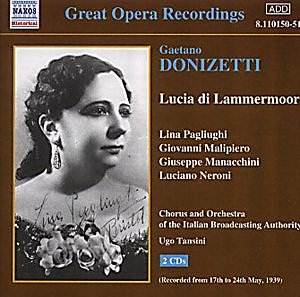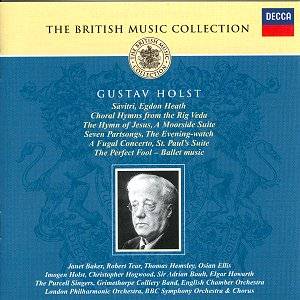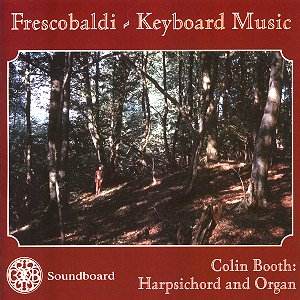 Composer: Gaetano Donizetti
Composer: Gaetano Donizetti
Works: Lucia di Lammermoor
Performers: Lina Pagliughi (soprano), Giovanni Malipiero (tenor), Giuseppe Manacchini (baritone), Luciano Neroni (bass), Muzio Giovagnoli (bass), Maria Vinciguerra (soprano), Armondo Giannotti (tenor), Orchestra and Chorus of the Italian Broadcasting Authority
Recording: Recorded in Rome from 17 to 24 May, 1939
Label: NAXOS HISTORICAL 8.110150-51 [2 CDs 134.24]
Donizetti’s Lucia di Lammermoor occupies a pivotal place in the operatic canon, a work that encapsulates the emotional extremes of romantic melodrama within a framework of intricate bel canto. First performed in 1835, it has since been a staple of the repertory, yet its interpretation has evolved dramatically over the decades. This recording, featuring the luminous Lina Pagliughi as Lucia, captures a performance style that, while rooted in the early 20th century, feels refreshingly distant from the more bombastic renditions that dominate contemporary stages.
Pagliughi’s Lucia emerges as a paragon of the lyrical soprano tradition, her voice characterized by a lightness and clarity that contrasts sharply with the heavy emotional weight often attributed to the role. In the “Mad Scene,” her execution of the flurry of coloratura is not merely technical; it possesses a grace that evokes the essence of Donizetti’s melodic lines. Unlike the more dramatic interpretations by Callas or Sutherland, Pagliughi’s approach allows the nuances of the character’s descent into madness to unfold organically, revealing a profound vulnerability. This interpretation reflects a historical performance practice that values elegance and textual fidelity over sheer volume and dramatic intensity.
Giovanni Malipiero’s tenor work as Edgardo complements Pagliughi’s portrayal with a clarity and lyrical polish that speaks to his prominence in the Italian repertory. His phrasing in “Tombe degli avi miei” is notable for its vocal line’s seamless legato, allowing for an emotional depth that resonates without overshadowing Lucia’s narrative. The duo’s duets, particularly “D’immenso giubilo,” are executed with a level of expressiveness that balances their distinct vocal colors, creating a palpable tension that enhances the opera’s tragic trajectory.
The performance is further bolstered by the solid contributions of Giuseppe Manacchini and Luciano Neroni, whose portrayals of Enrico and Raimondo, respectively, ground the more ethereal elements of Pagliughi and Malipiero’s work. Manacchini’s Enrico is assertive yet nuanced, while Neroni’s presence adds a gravitas that is essential to the narrative arc. Ugo Tansini’s conducting provides a cohesive framework for the performance; his attention to the orchestral textures allows the lush strings and woodwinds to resonate beautifully, while ensuring that the singers remain at the forefront of the dramatic action.
Sound quality is particularly commendable for a recording of its time, with a clarity that allows for the intricate interplay between voice and orchestra to be fully appreciated. Remastered by Ward Marston, the recording retains a freshness that invites listeners to engage closely with the performance. While there are notable cuts—common in recordings from this era—these omissions do not detract significantly from the overall impact of the opera. Instead, the inclusion of 37 minutes of additional arias by Pagliughi showcases her versatility across the bel canto repertoire, enhancing the listening experience.
This release stands as a testament to the evolving interpretation of Lucia di Lammermoor, offering a refreshing alternative to the more familiar high-octane performances that have come to define the role. Pagliughi’s artistry, combined with the solid ensemble and Tansini’s thoughtful direction, results in a compelling rendition that honors the spirit of Donizetti’s work while illuminating the subtleties of its characters. For those willing to embrace a more nuanced approach to this operatic classic, this recording serves as a significant and enriching experience.



